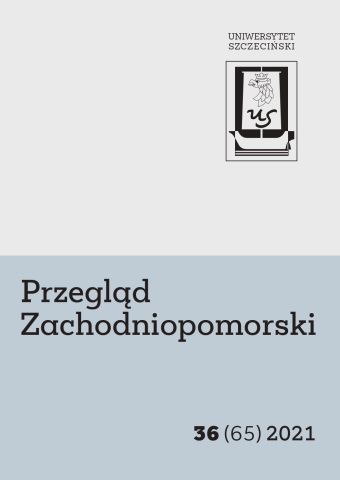Relacje podróżnicze z końca XVI i XVII wieku jako pierwsze opisy architektury i sztuki Szczecina
Travel reports from late 16th century and 17th century as first descriptions of architecture and art of Szczecin
Author(s): Barbara Maria Ochendowska-GrzelakSubject(s): History, Fine Arts / Performing Arts, Cultural history, Architecture, Local History / Microhistory, Modern Age, 16th Century, 17th Century, 18th Century, History of Art
Published by: Wydawnictwo Naukowe Uniwersytetu Szczecińskiego
Keywords: travel reports; Szczecin; Duchy of Pomerania; architecture and art of Szczecin
Summary/Abstract: The purpose of the article is to analyse the reports of the travellers passing by Szczecin in the period from late 16th century and 17th century with regard to the contained descriptions of the objects of architecture and art. Discussed were passages from twelve diaries of travellers from Germany, Poland, Italy, and England. These accounts vary, but also have some elements in common. The majority of peregrinators depicted Szczecin as a rich port town with picturesque location. Most of them described the Renaissance ducal castle as a dominant element among the town buildings. Its descriptions date back to times when it was a residence of the Griffin dynasty, and subsequently, after the dynasty became extinct, when the town was ruled by the Swedes and the rulers of Brandenburg. From among seven Gothic churches in Szczecin most frequently visited were two most prominent and with central location: St. Jacob’s Church and Marian Church. They were appreciated, particularly emphasized was their size as their distinguishing feature. Although there weren’t in the town instances of “contemporary” 17th-century Baroque architecture – perhaps apart from the bourgeois houses – Szczecin was perceived as “beautifully built”. After the Swedes constructed in early 17th century new defensive fortifications, the travelers described the capital of Pomerania as “well protected”. The visitors paid less attention to the mobile objects of art. The most distinguishing of the discussed reports is that of Filip Hainhofer who was a guest of Duke Filip II and hence stayed in the town for the longest time. As the Duke’s art dealer, he was sensitive to the beauty of objects, which can be explained by his profession but also by his personal sensitivity. However, most of the peregrinators displayed “culture of curiosity” with regard to the objects of art. Artifacts were perceived as peculiarities and curious details, aesthetic judgments weren’t too often formulated. An example of this can be the popularity of the epitaph of the Eckstedt spouses in St. Jacob’s Church, most frequently mentioned in the diaries not because of its craftsmanship but for the anecdote connected to it.
Journal: Przegląd Zachodniopomorski
- Issue Year: 36/2021
- Issue No: 01
- Page Range: 95-130
- Page Count: 36
- Language: Polish

